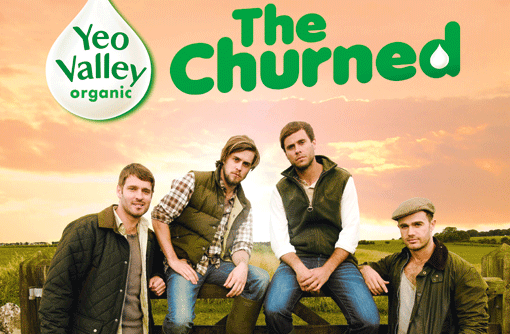Yeo Valley goes from rapping farmers to boy bands

Clever marketing can define a business and send sales spiralling, but get it wrong and it can quickly become a drain on valuable resources.
As Tim Mead, managing director at Somerset’s Yeo Valley, says: “About 80% of the money spent on marketing doesn’t work. But nobody can work out which 20% does.”
However, that 20% can be enormously powerful, as Yeo Valley’s now-famous rapping farmers have proved. So what options are available to other processing businesses, small or large?
Changing times
When Yeo Valley was established in 1974, Mary Mead did very little marketing, as sales were either local, through word-of-mouth, or to Waitrose under its own label. It wasn’t until the family’s Holt Farm turned organic 18 years ago that Yeo Valley launched its own organic brand.
“Once you are trying to sell a brand rather than own-label products, you enter a completely new ball game,” says Mrs Mead. “It is better to have your own brand as you have more control and hopefully more margin. But you need to put quite a lot of money into promoting that brand, particularly if you are dealing with the supermarkets.”
Generic dairy promotion rarely works – as although it may boost sales, it does not add value to farmers’ prices, says Mrs Mead. “I think the only solution is to go back to supplying the co-operatives, so the processors have to go to them to buy their milk. Otherwise, farmers remain powerless because of the dysfunctional supply chain.”
That said, Yeo Valley put a lot of effort into promoting the relatively new idea of organic dairy farming as well as its own brand, including advertising in weekend papers to boost awareness of organic products.
Media
“And if you can persuade the media to write articles about you, then that helps,” she says.
Writing your own articles in local publications, blogging on your website, and dropping leaflets or newsletters can also help to forge links with your consumers, she adds. “But the most important thing is to keep doing your accounts every month, so you know where you are.”
| Top Tips for marketing your brand: • Use branding to add value and obtain loyalty |
|---|
The three key sales drivers are awareness of a product, frequency of purchase, and volume of each purchase, says Mrs Mead’s son Tim Mead. “Marketing has to affect each of these facets. Advertising makes people more aware of you and more likely to make a first purchase.
“The frequency of purchase is about the quality of the product, packaging, information and so on; it’s about perceived value for money, and we’re trying harder and harder to explain to people what we do and how we go the extra mile.” Volume of purchase often relies on retail promotions. “We do sampling outside supermarkets, and selling at low prices at places such as Glastonbury.”
Choosing a brand, and marketing it, is all about a product’s unique selling points, he adds. “Branding is a way of adding value and getting loyalty. It’s about communicating the reasons why people should purchase your product, rather than just competing on price.” Innovative packaging, environmental consciousness, and ease of use all help to drive sales.
Television
Traditionally, the key to marketing is to communicate one or two main selling points in any advert or article, so there is not too much for the consumer to remember. However, Yeo Valley took a different approach, including when it opted for a two-minute television commercial instead of the usual 45-second advert.
“You can get a lot more messages across in two minutes; we wanted to portray the heart and soul of the farm and business, not just the product. That’s what makes us different to the multinationals,” says Mr Mead.
“There are so many different communication channels now, that the ability to communicate more than one message is far greater than it used to be.”
So why rapping farmers? “We wanted to portray farming as modern and relevant; we thought it was quite important to say to people that farmers, particularly organic ones, are not the stereotypical luddites that they are often portrayed as. Also, consumer confidence is at a bit of a low, so we wanted to put a smile on their faces and make them feel a little better.”
The advert was one part of a £5m campaign, and aired eight times during The X Factor series, watched by 16 million people. It also went viral on the website YouTube. “Two million people saw our advert on YouTube; that’s even better than a television advert because they made the effort to look at it and forward it to friends. We took a risk because of the potential for better reward.”
